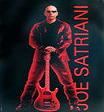 |
共有9171人关注过本帖树形打印复制链接主题:求助各位!等效电路的小问题 |
|---|
 chengd |
小大 1楼 | 信息 | 搜索 | 邮箱 | 主页 | UC | |
 加好友 加好友  发短信 发短信

等级:新手上路 帖子:6 积分:272 威望:0 精华:0 注册:2007-11-6 15:57:46 |
求助各位!等效电路的小问题  Post By:2007-12-18 17:12:27 [只看该作者] Post By:2007-12-18 17:12:27 [只看该作者]
|
|

|
 Acoustics |
小大 2楼 | 信息 | 搜索 | 邮箱 | 主页 | UC | |||||||||||||
 加好友 加好友  发短信 发短信
 电声工程师
电声工程师
等级:版主 帖子:3520 积分:26241 威望:2 精华:19 注册:2006-2-13 13:44:44 |
 Post By:2008-1-12 18:20:35 [只看该作者] Post By:2008-1-12 18:20:35 [只看该作者]
|
|||||||||||||
 学无止境! |
||||||||||||||

|
 Acoustics |
小大 3楼 | 信息 | 搜索 | 邮箱 | 主页 | UC | |
 加好友 加好友  发短信 发短信
 电声工程师
电声工程师
等级:版主 帖子:3520 积分:26241 威望:2 精华:19 注册:2006-2-13 13:44:44 |
 Post By:2008-1-12 18:21:21 [只看该作者] Post By:2008-1-12 18:21:21 [只看该作者]
|
|
 学无止境! |
||

|
 Acoustics |
小大 4楼 | 信息 | 搜索 | 邮箱 | 主页 | UC | |||||||||||||||||||||||
 加好友 加好友  发短信 发短信
 电声工程师
电声工程师
等级:版主 帖子:3520 积分:26241 威望:2 精华:19 注册:2006-2-13 13:44:44 |
 Post By:2008-1-12 18:22:26 [只看该作者] Post By:2008-1-12 18:22:26 [只看该作者]
|
|||||||||||||||||||||||
 学无止境! |
||||||||||||||||||||||||

|
 Acoustics |
小大 5楼 | 信息 | 搜索 | 邮箱 | 主页 | UC | |
 加好友 加好友  发短信 发短信
 电声工程师
电声工程师
等级:版主 帖子:3520 积分:26241 威望:2 精华:19 注册:2006-2-13 13:44:44 |
 Post By:2008-1-12 18:23:06 [只看该作者] Post By:2008-1-12 18:23:06 [只看该作者]
|
|
 学无止境! |
||

|
 Acoustics |
小大 6楼 | 信息 | 搜索 | 邮箱 | 主页 | UC | |
 加好友 加好友  发短信 发短信
 电声工程师
电声工程师
等级:版主 帖子:3520 积分:26241 威望:2 精华:19 注册:2006-2-13 13:44:44 |
 Post By:2008-1-12 18:24:10 [只看该作者] Post By:2008-1-12 18:24:10 [只看该作者]
|
|
 学无止境! |
||

|
 Acoustics |
小大 7楼 | 信息 | 搜索 | 邮箱 | 主页 | UC | |
 加好友 加好友  发短信 发短信
 电声工程师
电声工程师
等级:版主 帖子:3520 积分:26241 威望:2 精华:19 注册:2006-2-13 13:44:44 |
 Post By:2008-1-12 18:24:53 [只看该作者] Post By:2008-1-12 18:24:53 [只看该作者]
|
|
 学无止境! |
||

|
 Acoustics |
小大 8楼 | 信息 | 搜索 | 邮箱 | 主页 | UC | |
 加好友 加好友  发短信 发短信
 电声工程师
电声工程师
等级:版主 帖子:3520 积分:26241 威望:2 精华:19 注册:2006-2-13 13:44:44 |
 Post By:2008-1-12 18:27:11 [只看该作者] Post By:2008-1-12 18:27:11 [只看该作者]
|
|
 学无止境! |
||

|
|
客人(202.105.*.*) |
小大 9楼 | |
 |
 Post By:2008-1-12 22:44:47 [只看该作者] Post By:2008-1-12 22:44:47 [只看该作者]
|
|

|
 水仙 |
小大 10楼 | QQ | 信息 | 搜索 | 邮箱 | 主页 | UC | |
  加好友 加好友  发短信 发短信
 电声从业人员
电声从业人员
等级:超级版主 帖子:6537 积分:51127 威望:10 精华:39 注册:2005-10-28 8:32:06 |
 Post By:2008-6-23 12:58:00 [只看该作者] Post By:2008-6-23 12:58:00 [只看该作者]
|
|
 声学楼--声学工程师之家 QQ:350824984,邮件:adrian_chi@163.com,微博:adrian_chi,微信:adrian_chi |
||

|
 水仙 |
小大 11楼 | QQ | 信息 | 搜索 | 邮箱 | 主页 | UC |
  加好友 加好友  发短信 发短信
 电声从业人员
电声从业人员
等级:超级版主 帖子:6537 积分:51127 威望:10 精华:39 注册:2005-10-28 8:32:06 |
 Post By:2008-6-23 13:05:31 [只看该作者] Post By:2008-6-23 13:05:31 [只看该作者]
|
 声学楼--声学工程师之家 QQ:350824984,邮件:adrian_chi@163.com,微博:adrian_chi,微信:adrian_chi |
|

|
 水仙 |
小大 12楼 | QQ | 信息 | 搜索 | 邮箱 | 主页 | UC | |
  加好友 加好友  发短信 发短信
 电声从业人员
电声从业人员
等级:超级版主 帖子:6537 积分:51127 威望:10 精华:39 注册:2005-10-28 8:32:06 |
 Post By:2008-6-23 13:13:07 [只看该作者] Post By:2008-6-23 13:13:07 [只看该作者]
|
|
 声学楼--声学工程师之家 QQ:350824984,邮件:adrian_chi@163.com,微博:adrian_chi,微信:adrian_chi |
||

|
 technics |
小大 13楼 | 信息 | 搜索 | 邮箱 | 主页 | UC | |
 加好友 加好友  发短信 发短信

等级:新手上路 帖子:9 积分:72 威望:0 精华:0 注册:2008-6-14 14:31:11 |
 Post By:2008-6-24 11:22:47 [只看该作者] Post By:2008-6-24 11:22:47 [只看该作者]
|
|

|
 ZY |
小大 14楼 | 信息 | 搜索 | 邮箱 | 主页 | UC | |
 加好友 加好友  发短信 发短信

等级:黑侠 帖子:507 积分:7144 威望:0 精华:0 注册:2006-4-15 21:25:26 |
 Post By:2008-6-27 9:15:56 [只看该作者] Post By:2008-6-27 9:15:56 [只看该作者]
|
|
 自以为是 |
||

|
 benny0130 |
小大 15楼 | 信息 | 搜索 | 邮箱 | 主页 | UC | |
 加好友 加好友  发短信 发短信

等级:业余侠客 帖子:71 积分:3179 威望:0 精华:0 注册:2006-8-8 15:06:47 |
 Post By:2008-6-27 13:07:29 [只看该作者] Post By:2008-6-27 13:07:29 [只看该作者]
|
|

|
 jqr01 |
小大 16楼 | 信息 | 搜索 | 邮箱 | 主页 | UC | |
 加好友 加好友  发短信 发短信

等级:侠之大者 帖子:194 积分:1483 威望:0 精华:0 注册:2008-10-17 22:51:47 |
 Post By:2008-10-18 19:13:11 [只看该作者] Post By:2008-10-18 19:13:11 [只看该作者]
|
|

|
 lch311 |
小大 17楼 | 信息 | 搜索 | 邮箱 | 主页 | UC | |
 加好友 加好友  发短信 发短信

等级:新手上路 帖子:8 积分:100 威望:0 精华:0 注册:2008-5-28 23:39:48 |
 Post By:2008-10-27 21:04:11 [只看该作者] Post By:2008-10-27 21:04:11 [只看该作者]
|
|

|
 henley_z |
小大 18楼 | 信息 | 搜索 | 邮箱 | 主页 | UC | |
  加好友 加好友  发短信 发短信
 荒原困兽
荒原困兽
等级:新手上路 帖子:401 积分:2571 威望:0 精华:0 注册:2008-1-29 11:06:14 |
 Post By:2008-11-13 15:50:38 [只看该作者] Post By:2008-11-13 15:50:38 [只看该作者]
|
|
 敦伦尽份 闲邪存诚 |
||

|
 gcc |
小大 19楼 | 信息 | 搜索 | 邮箱 | 主页 | UC | |
 加好友 加好友  发短信 发短信

等级:新手上路 帖子:51 积分:362 威望:0 精华:0 注册:2007-2-21 23:58:45 |
 Post By:2009-1-18 21:55:21 [只看该作者] Post By:2009-1-18 21:55:21 [只看该作者]
|
|

|